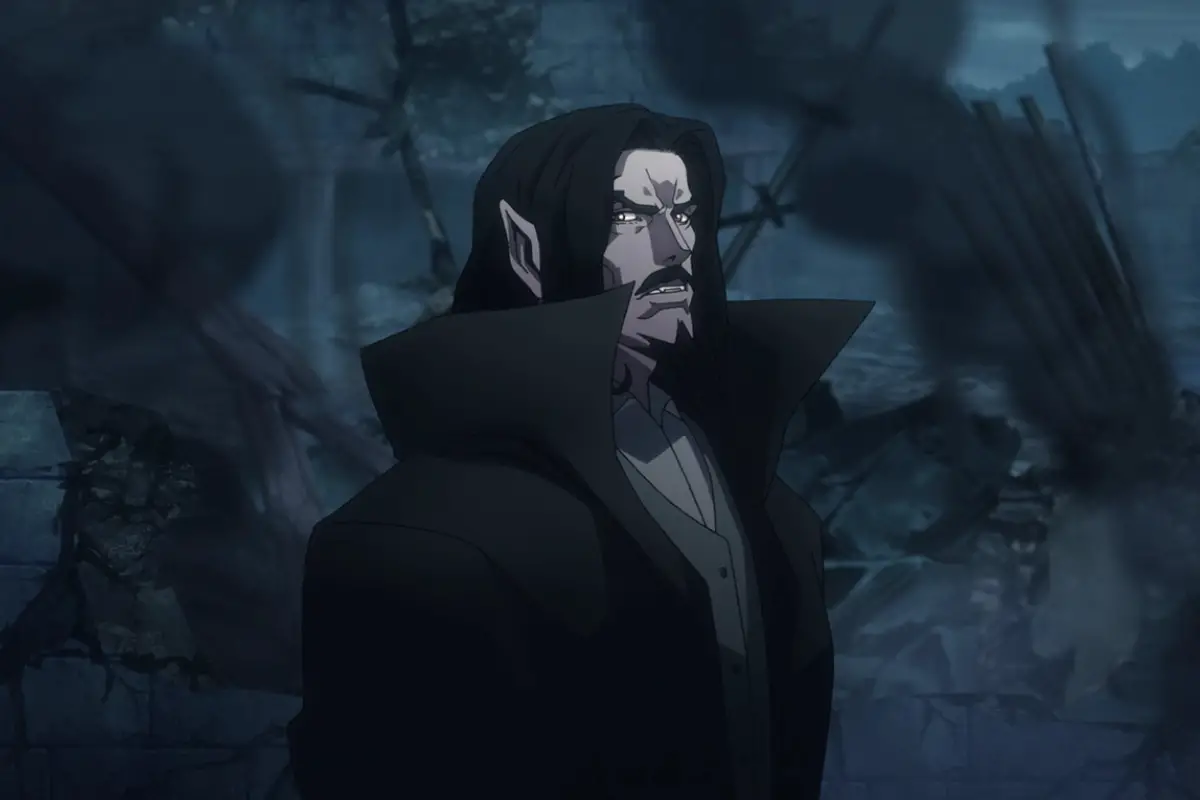Video game adaptations rarely, if ever, work. The reasons for this are plentiful, but the core of the issue lies in the ability to competently translate a narrative that is created around the core aspect of player interaction, and making that narrative into something that can still be entertaining in a passive form. Moreover, there is often little, if any, real desire or need for these adaptations to exist in the first place, because as the old saying goes, “If it ain’t broke, don’t fix it.”
But in the case of “Castlevania,” a game series usually constrained by the limitations of being a simple, 2D, side scrolling platformer, and hailing from a time period where hardware was a very limiting factor, there is much room for the story to be expanded upon with modern animation, and perhaps, even surpass the original series by fleshing out characters that the target audience may already have some sort of connection with.
So, has Netflix knocked another one out of the park with one of their most ambitious original series yet? The short answer to that question is yes, but the long answer is that it depends on what the viewer is expecting from the series going in.
The setup for the series is simple enough. Count Dracula begins a tragic romance with a woman of science, finding fleeting peace with humanity before she is eventually burned at the stake for associating with him. Not one to deal with these sorts of things very well, the infamous creature of the night then unleashes an army of demons upon all of humanity, vowing to destroy every last human for taking the love of his life away from him.
Enter Trevor Belmont, born of a house that once protected humanity from vampires and all sorts of creatures but have since fallen from grace and been excommunicated from the church, which holds most, if not all of the authoritative power in the land. Trevor is one of the best examples of what this show does so exceedingly well, in that the voice actors bring life to the characters in a way that suits the genre. Trevor plays the classic role of the roguish, wisecracking hero with a reluctant heart of gold hidden underneath a rough exterior of alcohol and indifference.
Other supporting characters are somewhat hit and miss in their execution, but even the misses seem to land perfectly in a way that plays to the ridiculous nature of the source material, fully embracing the campiness of the plot. For example, secondary antagonist through the first arc of the Bishop is the definition of comically evil, to the point where I am fairly certain that Emperor Palpatine would be shaking his head in disgust, but fans of the original source material will likely be able to appreciate the fact that not every story needs terribly complex characters, just entertaining characters that serve a purpose.
Then we have the strong-willed, fireball-slinging heroine that takes every opportunity to express her “disgust” for the protagonist’s brutish nature (but really, the audience knows that she has a crush on him, obviously) and the “too cool to wear a shirt” rival/ally to the protagonist in Alucard, a vampire himself. All of these classic archetypes may feel a bit more out of place in something along the lines of, say “House of Cards,” but within the framework of an adaptation with barely any story to begin with, they work quite well. The voice actors do a superb job of delivering their lines, even if some of them are in a “so cheesy it’s good,” kind of way.
The animation is another tremendous boon to this series, inspired heavily from Eastern Anime, as it completely dodges the problem of granting real flesh to characters who were formerly just a collection of pixels on a screen while also being easy on the eyes overall. That being said, “pleasing” might not exactly be the best word for the visuals if the viewer is somewhat squeamish, as the dark nature of the narrative is accompanied by buckets of gore, including disembowelments of both women and children, so be warned. The atmosphere of dread and despair is complemented perfectly by the oppressive reds and blacks that dominate the color palette, along with the stunning gothic architecture painstakingly recreated onscreen.
To say that this series is fast paced would be an understatement, and while this suits the simple, combat-centric roots of the core series, Netflix has taken this notion to the extreme by cramming an entire arc into merely four total episodes in season one, totaling just over twenty minutes each. This is a strength for those who may be new to the series, as the initial investment is quite low for the potential payoff. In addition, newcomers will be caught up completely with all of the proper setup for the grand adventure ahead by the end of these four episodes, ready to embark on a bloody crusade throughout Europe with the show’s protagonist, Trevor Belmont, as he attempts to save all of humanity from the wrath of an angered Count Dracula.
However, that’s unfortunately where the show ends, just as everything is finished being set up.
What Netflix has managed to deliver with these four episodes has been absolutely brilliant in comparison to most adaptations of this nature, no doubt, but no matter how great the setup that they have delivered may be, what was supposed to be a full season could still leave the viewer feeling cheated, as it is just that, the setup for the real adventure to take place in the next season. In fact, the entire first season that is currently available should be viewed as the prologue to the video game, covering everything that would have been summarized in a block of text before Trevor was launched on a platforming adventure through Dracula’s castle.
This isn’t even much of a spoiler at this point, seeing that there really isn’t much beyond the basic premise to spoil, but that isn’t to say that this series isn’t worth your time. Overall, this series succeeds by remembering what the central goal of any form of entertainment is, be it video game or animated series: entertainment, and it provides that in spades (or, rather, pitchforks).
From the charming yet simple characters, to the shockingly detailed animation and overall capturing of the game series’ original charm, this short season still has plenty to offer both newcomers and established veterans to the series. That, and the fact that Netflix is already working on another season consisting of eight total episodes means that the small investment of time is well worth it, even with so many possibilities vying for one’s attention on Netflix, and even with the appalling lack of success with past video game adaptations.
Netflix has proven time and time again that they are full of surprises, and as a fan of the source material, I can say that despite its shortcomings, this series is one of the most pleasant surprises yet.


















[…] Trevor is one of the best examples of what this show does so exceedingly well, in that the voice act…. […]